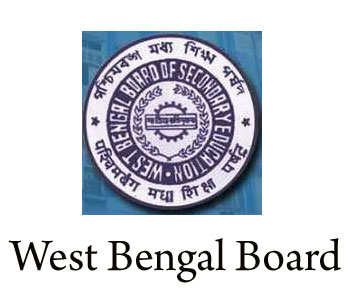West Bengal Board Higher Secondary Syllabus (Arts) Class-XII
Disclaimer: This website is NOT associated with CBSE, for official website of CBSE visit - www.cbse.gov.in

West Bengal Board Higher Secondary Syllabus (Arts) Class-XII
West Bengal Board Higher Secondary Syllabus (Arts) Class-XII
HISTORY (HIST)
Theory-80 marks
Project-20 marks
1. Remembering the past
A: Imagine the past: myths, legends and folk-tales, memory and oral traditions.
B: Inheritance of the past: the colonial constructuins, Indigenous imaginations.
C: Importance of History as a professional discipline- Methods of “Modern” History writing.
I. Museums as institutions of organising the past.
II. Brief outline of the development of museums and different types of museums,
private collections.
2. Situating colonialism and imperialism in the 19th & 20th Centuries
A. Brief overview of 7th & 18th century colonisation in Asia & the New World.
B. Economic Dynamics of Imperialism and Colonialism; from Mercantile Capital to Industrial
& Finance Capital. Hobson - Lenin thesis on Colonialism and Imperialism.
C. The Political Basis of Colonialism: The necessity of controlling areas on which the
imperialist country was economically dependent.
D. The Question of Race and its Impact of Colonial Societies.
3. The Nature of the Colonial Dominance: formal and Informal Empires
A. Case Study 1: India- as a ‘colonised’ state
- How political hegemony was established
- The instruments of control: Legislature / Bureaucracy / Police / Army
- The economy of the colonial state: revenue collection --- trade patterns --- Deindustrialisation Introduction of the railways --- late and selective industrialization
- Intellectual justification of the Empire : Mill, Macaulay an the Utilitarian
B Case Study 2 : China - where economic exploitation flourished without formal
political control of the imperialist countries
- Domination through economic exploitation - mining rights --- unequal treaties -- -- the Canton trade
- A comparative study of the Indian and Chinese experiences
4. Reaction to Imperialistic Hegemony
A : India
- The rise of a middle class - its features --- its acceptance of Western education -- its attitudes to traditional concepts in the social and religious context --- social reform movements and leaders in Bengal --- Narayan Gure, Veersalingam and others outside Bengal, Sir S.A. Khan and the Aligarh movement.
- Change and transformation in society as a result of the above factors.
- Proliferation of the rural elite: Patidars, Sahukars, money-lenders and middlemen-greater fragmentation of rural classes due to economic reasons.
- The emergence of a new rural elite: patidars, Sahukars, money-lenders and middlemengreater fragmentation of rural classes due to economic reasons.
- The emergence of an industrial force
- Subaltern groups : Adivasis, Dalits.
- Western ideas and the Indian response:
a. The aspiration of the middle coass and its fall outs.
b. Regional cultural responses, in partivular, the ‘Bengal Renaissance’
c. How Western concepts of ‘time’, ‘health and ‘labour for wages’ brought about a change in Indian society and the local mindset.
B: China
Emergence of a Western educated class- the influence of Christianity --- the scholars’ response- May Fourth Movement.
C: Migration of indentured labourers: formation of the Indian and Chinese Diaspora.
5. Governing the Colonial State India
- Govt. of India Acts of 1909, 1919, and 1935 at tools for limiting franchise, introducing communal electorates, maintaining administrative control and British hegemony
- The state machinery for suppressing freedom of expression e.g. the Rowlett Act and military / police control:
- The Jalianwala Bagh incident / the Meerut Conspiracy Case
- Divide and Rule policy: using community/caste/perceived/ ethnic groupings to divide and anti-colonial movement, e.g., supporting the demands of the Muslim League; the
- Communal Award of 1932; interfering in caste politics such as the temple entre issue
- The Princely states and the British Government: the creation of an alternative loyalist base
- Economic policies from 1914 to 1945 e.g. limited industrialisation; currency regulation after the First World War; high taxation even in famine conditions: (Gujarat, 1918,1928): the Bengal Famine
6. The Second World War and the Colonies
A: India, 1940-46
Linlithgow Offer --- Cripps Mission --- the Indian response and the Quit India Movement- Subhas Bose and the INA - INA Trials --- RIN Revolt - the backdrop to the Transfer of Power: The British government’s role: Cabinet Mission - Constituent Assembly - Mountbatten’s negotiations - Mountbatten Award - Transfer of power - The Indian response.
Click Here to Download Full Art's Syllabus Class-XII
Courtesy: West Bengal Board